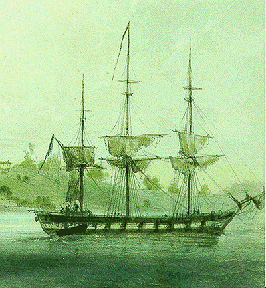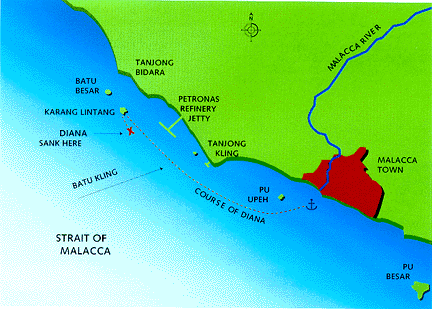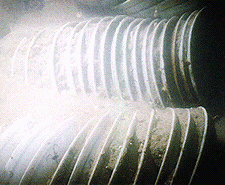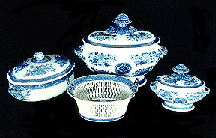|
Shipwreck & Sunken Treasure
Introduction by Chris Langmaid, a member of the dive team that
raised over 24,000 artifacts from the 1817 shipwreck 'Diana'. Chris learned to
dive with the British Sub-Aqua Club, Brighton Branch 007 at the age of 14, and
was a member fro 1985 until 1990 when he left the UK to work overseas as a
Commercial Diver.
Introduction.
One thing that really interests me is shipwrecks.
This all started for me when I started diving in 1985 with the British Sub-Aqua
Club in Brighton, England. It was also about the time that three famous
shipwrecks were found. Each of these three wrecks are very different for
different reasons.
The 'Titanic' in its time was "the
largest moveable object built by the hand of man' and was reputably unsinkable.
Unfortunately, it was not unsinkable, and more unfortunate were the
circumstances surrounding its sinking on April 14 1912, with such catastrophic
loss of life, and on her maiden voyage.
'Nuestra Senora de Atocha', a Spanish
almiranta (vice-flagship) sank in 1622 off the Florida Keys. What makes
this wreck interesting is the story of the 17 year search and later recovery by
the late Mel Fisher and the enormous amount of treasure found during the
excavation.
The wreck that was to later change my interest in
shipwrecks was the 'Geldermalson', a Dutch East Indiaman (VOC) that sank
in the South China Sea in 1752. It wasn't the gold or the enormous amounts
of Ming Dynasty porcelain that interested me, but one of the divers who
was working on the project. Dorian Ball, a diver working for Michael
Hatcher had planes of his own. He was to later go in search of his own
wreck.
In early February 1994, I received a call from
Dorian Ball, he had spent many years searching for a ship lost off the Mallaca
coast in 1817. December 21 1993 in the early hours of darkness, that
search had come to an end when Dorian had found a few scattered plates on the
seabed.
Now all he needed was a professional dive team. Due to the sea conditions,
near zero visibility, strong currents and the depth of the wreck, in 35 meters
of water, it was too much of a risk using armature SCUBA divers. What he
needed was a dive team of professional oil-field divers, who were experienced in
diving with surface orientated hose gear, for long hours for the many months it
would to take to survey and recover the artifacts from the wreck of the Diana.
He had obtained a list of such divers, and I was on the list. I hung up
the phone and began packing my bags. Within 30 minutes I was on my way to
Mellaca.
The Diana Adventure
"This is the story of hopes and dreams and
chasing treasure. It is a story of a desire to find and salvage a shipwreck and
recover a cargo of importance. Starting without any money, without any special
qualifications and without any special equipment. Just the dream."
- Dorian Ball
Malacca, 4th March 1817.
|



